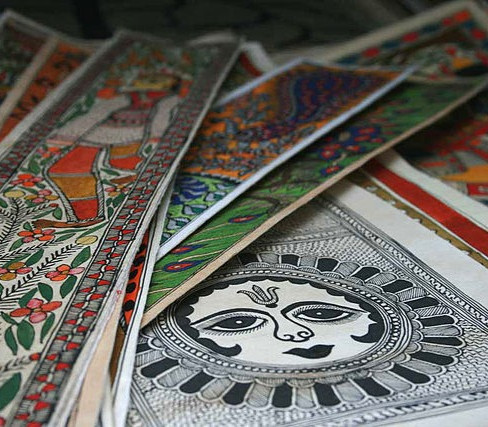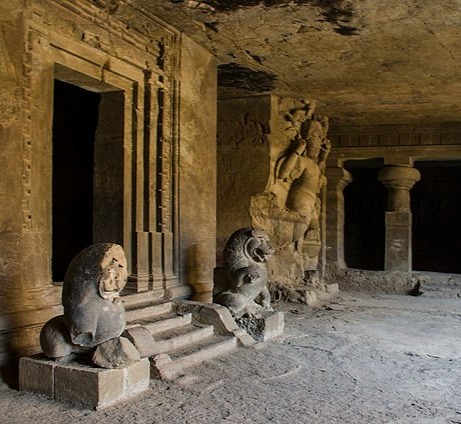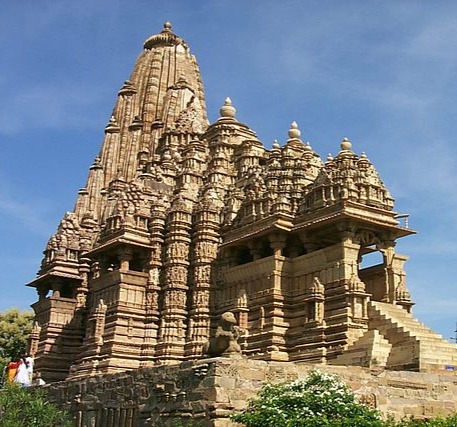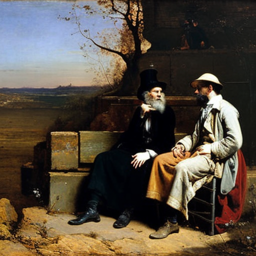Indian Dark Academia
- Nidhi Paralikar
- Apr 3, 2023
- 5 min read
Updated: Mar 1, 2024
The term 'aesthetic' has been on the rise on the internet for the past four years. Thanks to social media influencers, this term has become increasingly popular in fashion, lifestyle, and culture. However, for this article, I'll be focusing on the definition of aesthetics, some basic characteristics of Dark Academia in the Indian context, and book recommendations.
When I was deciding on a major for my bachelor's degree, I struggled to choose between English Literature and Philosophy. Although I had been interested in English for a long time, it wasn't until junior college that I discovered Philosophy. I fell in love with it immediately, thanks in part to my professor, Mrs. Gokhale. She created a safe space in our classroom where we could explore life's big questions. That's where I first encountered the term 'Aesthetics.'
Aesthetics, as a branch of philosophy, focuses on how we perceive and experience the world around us. It examines how we, as humans, react to things that are pleasing or attractive. This can include art, music, literature, architecture, design, and even nature. Aesthetics also delves into the emotional response these things evoke.

As you can imagine, aesthetics is a broad and intricate field that encompasses various aspects of our perception and worldly experiences. Its purpose is to help us understand and appreciate the world around us. The best part is that you don't have to subscribe to a single aesthetic at any given moment. How you view the world, where you find beauty, and how you appreciate this beauty is a personal journey that you must undertake yourself. If you associate yourself with something just for the sake of it, you'll miss out on the beauty that this world has to offer.
Dark Academia is an aesthetic inspired by the ideals and learning of traditional academia. It's characterized by a love for knowledge, learning, and culture. Dark Academia often includes elements of history, mystery, and nostalgia. People who are drawn to this aesthetic enjoy exploring historical sites, visiting libraries and museums, and engaging in intellectual pursuits. This aesthetic evokes a sense of longing for vintage classic styles, burning the midnight oil, ink-stained hands, and the sound of a pen scratching over papers.
This aesthetic is often associated with European culture and history. One significant point of discussion within the Dark Academia culture is the inherent elitism it brings. I believe this could be a blog article in itself.

For now, I'll focus on the other characteristics of Indian Dark Academia that I closely identify with.
Literature: A longing to study and explore ancient scriptures like Vedas and Natyashastra. Fascination with the development of themes and traditions in Indian literature throughout history.
Folklore and Mythology: A fascination towards the diverse stories about Indian Mythology and folktales.
Architecture: A fascination towards ancient architecture and art, longing to explore places like Khajuraho and Elephanta caves, Forts, and Palaces. Visiting museums that shine a light on the vast cultural and archaeological history of the Indian subcontinent.
Philosophy: A longing to study the philosophical traditions that have roots in Hinduism, Buddhism, Jainism, Charvak, etc.
Art: Exploring folk art like Madhubani/Mithila paintings and Warli paintings. Spending hours at a time getting lost in the canvases adorned by Raja Ravi Verma, Amrita Sher-Gil, V.S. Gaitonde, Ram Kumar, etc.
A few of the honorable mentions that I want to include are:
Textiles like Kalamkari, Chikankari, Ikat, Paithani, Bandhani, Pashmina, Kantha, etc. I highly recommend checking out this 2018 article about the textiles of India.
Music traditions like the Hindustani classical gharanas, Carnatic music, folk music traditions from different parts of India, etc.
Indian Theatre, both modern and the dance traditions like Kathakali, Mohiniyattam, and Odissi. Works of artists like Mahesh Dattani and Vijay Tendulkar have always and will keep fascinating me.
In my opinion, the Dark Academia aesthetic is best experienced by immersing oneself in the pursuit of knowledge and exploring different cultures through a romantic lens.
If you're looking to fully embrace this aesthetic, I've got some book recommendations from Indian English Literature that fit right in. I don't want to give away too much about these books, but for me, it's all about the setting and themes that make them perfect for the DA aesthetic.
So without further ado, here are some titles that you might want to check out:
The Palace of Illusions by Chitra Banerjee Divakaruni: Published in 2008, this novel is a retelling of the Indian epic Mahabharata from the perspective of Draupadi. Exploring themes of identity, gender roles, and the power of words, this is a fascinating read.
The Inheritance of Loss by Kiran Desai: Published in 2006, the novel does a wonderful job of portraying the conflict between embracing traditional Indian ways of life and the immigrant experience in Western countries. The book explores themes of multiculturalism, economic disparities, alienation and identity crisis, etc. The characters going through some deeply human experiences that no person is alien to make this book a wonderful read.
The Ministry of Utmost Happiness by Arundhati Roy: Published in 2017, the novel explores themes of religious tensions, political corruption, love and loss, and issues like Kashmir separatism. The novel follows several characters navigating the twists and turns of life in contemporary India. This book explores complex topics but the language used is beautiful and does not make it a difficult read.
A Suitable Boy by Vikram Seth: Published in 1993, the novel is set in 1950s India. It follows the lives of several families exploring the social and political changes in the newly independent India. Exploring themes like national identity, family, and the dance between modernity and traditionalism, this novel has an intricate plot.
The Immortals of Meluha by Amish Tripathi: Published in 2010, this is the first book in the Shiva Trilogy. The story is a fictional retelling of the Hindu god Shiva. This novel explores themes of good and evil, destiny and free will, power, and love. An interesting narrative with a fascinating protagonist, this novel deserves all the credit it gets.
Whether you're a fan of Indian English Literature or just looking to expand your reading list, the books mentioned in this article provide a great starting point for anyone interested in the Indian Dark Academia aesthetic. So why not pick up a book, settle in with a cup of tea, and transport yourself to another time and place? Who knows what you might discover?
While I have focused on the artistic side of DA in this blog, the pursuit of knowledge does not begin nor end there. For someone interested in STEM, the Dark Academia aesthetic might look completely different.
The Dark Academia aesthetic is a fascinating and multifaceted trend that has captured the imagination of people all over the world, including India. By exploring the pursuit of knowledge and culture through a romantic lens, we can fully embrace this aesthetic and enjoy the beauty of the past while looking forward to the future. Mine is a vibrant and colorful nation, and no shades of just brown and beige can do justice to it.
Note: All the images in this blog have been sourced from Wikimedia Commons.






























Love the idea of it! This is the aesthetic I am striving for now!